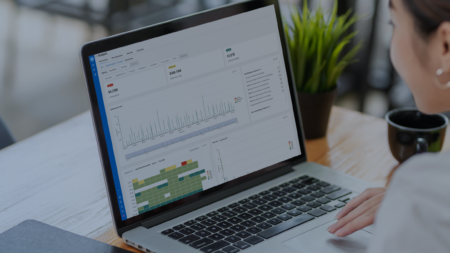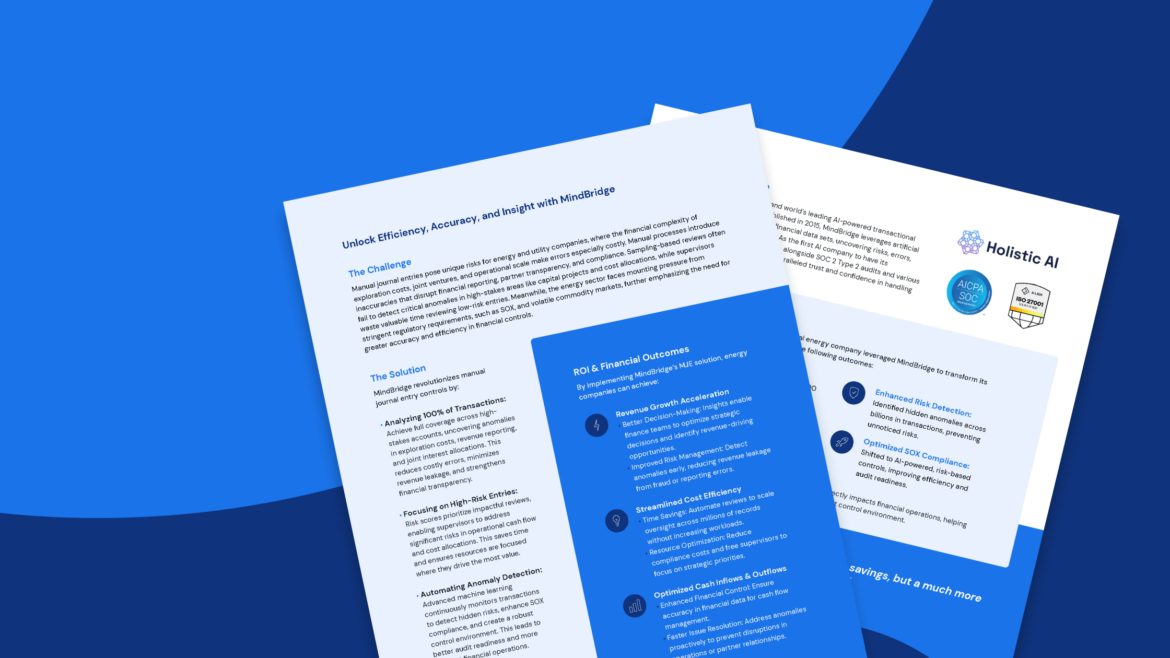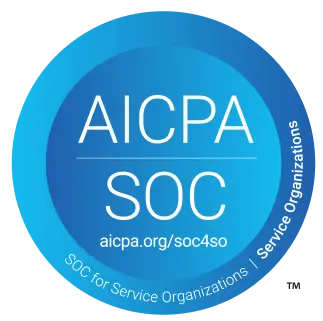Finance leaders are under more pressure than ever. Regulatory scrutiny is rising, market volatility is unpredictable, and finance teams are being asked to do more with less. Yet, many organizations still rely on outdated manual journal entry (MJE) reviews, creating unnecessary risk, inefficiency, and compliance gaps.
Traditional sampling methods fail to provide full financial oversight. They leave blind spots in capital projects, cost allocations, and high-risk transactions—leading to undetected anomalies and potential regulatory exposure. Meanwhile, finance teams spend hundreds of hours manually reviewing journal entries, often focusing on low-risk transactions while high-risk entries slip through the cracks.
AI-powered oversight changes this. By automating manual journal entry reviews, finance teams can analyze 100% of transactions in real-time, identify high-risk anomalies, and eliminate inefficiencies in compliance and controls. Instead of relying on arbitrary thresholds and sample-based reviews, finance leaders can strengthen SOX compliance, reduce review time, and ensure financial integrity at scale.
If your team is still manually reviewing journal entries, it’s time to rethink your approach.
The Hidden Costs of Manual MJE Reviews
Even the most diligent finance teams can’t catch everything when relying on sampling-based reviews. The reality? High-value transactions aren’t always high-risk, and low-value transactions can still pose significant threats.
Without full visibility into all journal entries, organizations risk:
Missed Anomalies & Undetected Errors
Manual sampling overlooks key financial red flags, leading to errors in capital projects, joint ventures, and operational cash flows. These overlooked discrepancies can accumulate over time, impacting financial accuracy and decision-making.
Compliance Gaps & SOX Exposure
Regulatory bodies expect full visibility and auditability, yet traditional sampling leaves gaps that can trigger compliance issues. SOX violations and audit findings are more likely when financial oversight lacks real-time risk detection.
Time-Consuming, Low-Value Reviews
Finance teams spend hundreds of hours manually reviewing low-risk transactions while high-risk entries slip through the cracks. This inefficiency pulls valuable resources away from strategic financial planning and risk mitigation.
The risks of outdated MJE reviews are clear—but the solution is already here.
The AI-Powered Shift: Full Oversight Without the Effort
Instead of manually sampling a fraction of journal entries, AI enables 100% transaction analysis—uncovering risk before it becomes a problem.
Automated Oversight for Every Transaction
AI eliminates reliance on random sampling, analyzing every journal entry in real-time to detect anomalies and flag potential compliance risks.
Smarter Risk Scoring & Prioritization
AI-powered financial oversight assigns risk scores to each transaction, allowing finance teams to focus only on high-risk entries rather than wasting time on routine approvals.
Stronger Compliance & Audit Readiness
By eliminating arbitrary sampling thresholds, AI ensures complete financial visibility—reducing SOX compliance risks and strengthening internal controls.
For industries like energy and utilities, where financial oversight is complex and highly regulated, this shift to AI is even more critical.
Real-World Proof: How a Leading Energy Company Transformed Oversight
A multinational energy company recognized that their manual review process left them exposed to unseen financial risks. They were manually reviewing just 1,400 transactions per year, creating blind spots across billions of dollars in journal entries.
By adopting AI-powered oversight, they:
- Increased transaction reviews from 1,400 to over 300,000 annually
- Saved 350+ hours of supervisor time by focusing only on high-risk entries
- Identified anomalies in billions of dollars in transactions
- Improved SOX compliance with AI-driven financial controls
See how they transformed their oversight—Read the full case study.
For energy finance leaders looking to move beyond manual reviews and sampling-based oversight, AI is already making a difference.
Download the Energy Finance MJE Data Sheet to see how AI is eliminating financial blind spots and improving compliance at scale.
Why Now? The Cost of Doing Nothing
Finance leaders who continue to rely on manual reviews risk falling behind. The regulatory landscape isn’t getting easier—and inefficiencies in financial oversight will only compound over time.
Now is the time to:
- Rethink financial controls with AI-driven oversight
- Mitigate compliance risk with proactive anomaly detection
- Improve efficiency by eliminating manual review bottlenecks
Ready to See How This Works?
Don’t let manual oversight hold your finance team back. AI-powered financial oversight is already transforming compliance, risk management, and efficiency for leading organizations.
Want to see AI-powered oversight in action? Schedule a demo, and let’s discuss how it can benefit your organization.




